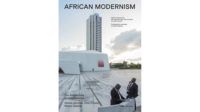This book is available in audio format for people with visual impairments.
The politics of accessibility in design are ever evolving, but the question remains: what if current perspectives fail to adequately engage people with disabilities in shaping the built environment? Take Hunters Point Library in Queens, New York, for example, which opened its doors to the public less than four years ago with a major design flaw: entire rows of book stacks in its atrium were inaccessible to mobility-challenged patrons. Now the library is the subject of a $10 million lawsuit by the city against its designer, Steven Holl Architects. Architecture’s relationship to ableism, that is, discrimination (intentional or otherwise) in favor of able-bodied people, has long been taken up by David Gissen, designer and professor of architecture at Parsons School of Design | The New School. His latest book, The Architecture of Disability: Buildings, Cities, and Landscapes beyond Access, adroitly challenges architectural paradigms in a bid to place disabled bodies front and center within the Western canon.
Gissen’s critique is wide-ranging. The author introduces the book with his own experiences as a disabled person—he underwent an above-knee leg amputation as a child during bone-cancer treatment, and wears a prosthetic limb—and, in subsequent chapters, takes up the handling of historical monuments and reexamines functionalism through the lens of ableism, among other topics. Of course, Gissen also points out the dearth of handicapped designers at the forefront of architecture and urban design, who could otherwise bring their politics to bear on a discipline that still needs to probe prevailing beliefs regarding accessibility.
Icons of architectural, national, and cultural importance, Gissen posits, are in many ways representations of a past that have excluded the disabled, and he draws on personal experience navigating such sites to question long-held notions of their symbolic value. For example, the U.S. Capitol is one of countless monumental edifices around the world originally constructed without accessibility in mind—a point highlighted by the March 12, 1990 Wheels of Justice Rally that saw participants with lower-limb mobility impairments hoist themselves up the grand staircase of the U.S. Capitol to impel Congress to pass the Americans with Disabilities Act. (It wasn’t until 2000 that the ADA-accessible U.S. Capitol Visitor Center was built.) On the other hand, the Acropolis in Athens was originally accessed by a series of ramps when it was built in the fifth century BCE—but its present-day means of access, designed by architect Dimitris Pikionis in 1957, consists of a winding, stepped marble path and is more of an aesthetic experience than one rooted in any form of historical authenticity.
That criticism of perceived authenticity extends to the “natural” environment, where sites such as Yellowstone should be “understood as gigantic territorial projects in physical relocation, management and regulation, infrastructural development, and architectural design”—Arcadia, it is not. There is timidity or lack of imagination in introducing greater accessibility to these landscapes, and such an attitude also extends, according to Gissen, to the realm of urbanization. “Embedded within the streets, sidewalks, water systems, waste-management systems, and myriad other infrastructural elements of cities,” Gissen notes, “are several key physical concepts that present challenges to people with any number of impairments.”
While access for the disabled has often been an afterthought, Gissen theorizes something of a framework for “preserving and conserving disability, urbanizing weaknesses, forming incapacities, disabling environments, constructing disability” that could establish a different set of rules for the analysis of past and present material constitution. He draws on the wooded communes on the outskirts of post–World War I Vienna built by disabled veterans, and the construction systems developed by Austrians Adolf Loos and Josef Frank for impaired settlers without the use of heavy machinery, as templates to actively engage with disabled bodies in the creation of their environments. Gissen also cites recent upgrades to the Acropolis, completed in 2021 by the Acropolis Restoration Service, that saw the expansion of the elevator located on the north face of the site, and the repaving of spaces adjacent to the Parthenon with concrete pavers to improve wheelchair access. His own involvement in the Acropolis Restoration Service includes a project commissioned by Hashim Sarkis for the 2021 Venice Architecture Biennale that included establishing forms of tactile representation, to allow people with visual impairments to navigate the archeological site.
The Architecture of Disability is a poignant call to arms to address the omnipresence of ableism across a broad spectrum of environments. And, while prescriptive solutions are lacking within Gissen’s manifesto, his adroit criticism of long-held architectural ideologies and his wealth of knowledge regarding precedents for inclusion provide something of a road map for the challenge that still lies ahead.




Post a comment to this article
Report Abusive Comment